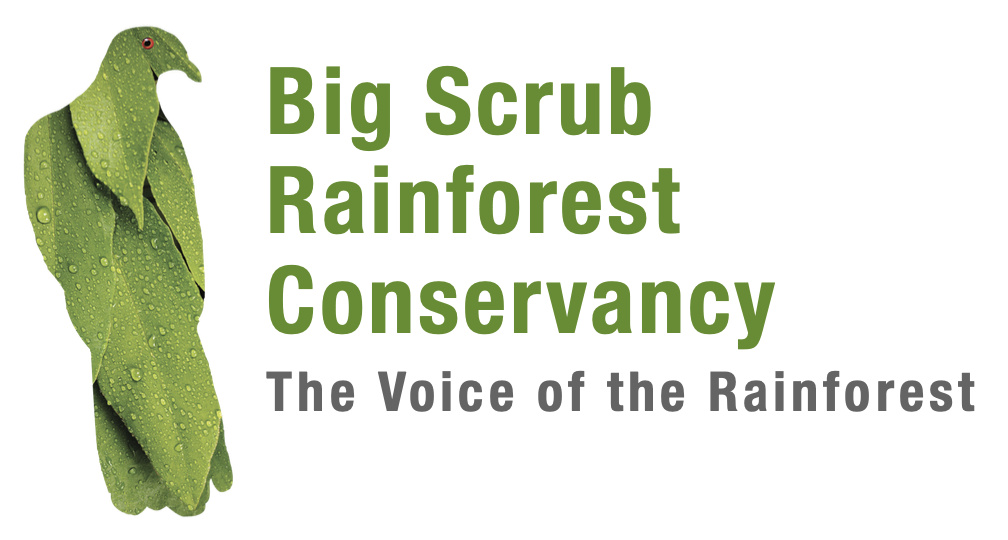On Friday 8th November 2019, after months of drought, an unexpected little smoke appeared in the rainforest in the bottom of Terania Creek Basin, somewhere near the Circle Pool. By the evening it was a glow heading up the western side. Then it exploded as it hit the fuel it needed on a north-facing ridge. Hugh and I and our daughter Terri sat all night on a grassy hill to the south of the Basin, watching in disbelief as the sky bloomed red and the Basin blazed.
Sclerophyll forests, mainly eucalypts, burn sooner or later; they need occasional fire and they promote it. Rainforest is not supposed to burn; it needs fire-free sites to regenerate. But, as the firies say, anything will combust if it is dry enough. Now I know how rainforest burns, at least in relatively benign conditions in spring. We are yet to find out how it burns in high summer, with strong winds and more intense heat.
In a soft burn in desiccated rainforest the fire trickles along, feeding on dry leaves, fronds and sticks. Since litter collects at tree bases, particularly in buttresses, the fire concentrates there, and eats away at the base. It doesn’t take long to start up the trunk and if it is hollow, as in an ancient tree or a strangler fig, it soon becomes a roaring chimney, even when the surrounding fire is not particularly intense.
That is what happened to my favourite Brush Box (Lophostemon confertus) in Terania Creek. It was a gigantic tree not far from the Circle Pool, in warm temperate rainforest. Its diameter at ground level was 6m, the largest I have ever seen, and its age was something more than 1200 years. The colossal butt had unusual buttress-like roots which emerged from the trunk and re-connected lower down. Kids loved perching up high on the broad swellings below the main trunk.
When we checked it two weeks after the fire started, we discovered that there was nothing left of the enormous bole but a few blackened ribs. The trunk and crown had crashed into the rainforest, tearing down vines and other trees. An old and dear friend was suddenly gone and the grief for our wounded forest became specific and intense.
The day after this discovery, Hugh and I realised that another precious tree in the rainforest, not so ancient but very significant, was at risk.
It was a huge strangling fig (Ficus obliqua) with a massive base of sprawling buttresses and roots, and a hollow core where the original host tree died. This tree is climbable and our family has used it as a coming-of-age tree for 10-year-old kids. On their tenth birthday they get to climb up the inside with their mother and from the top gaze out onto the surrounding rainforest canopy. Both of our kids said it was a momentous day for them – they were nervous but intensely proud when they came through.
The fires that ran down the eastern and western ridges from the Basin had continued to burn southwards and threaten hand-cleared containment lines. A flare-up of one of these fires was just a few 100 m from this fig and could threaten it with a slight change in wind direction.
Late in the evening Hugh and I discussed the risk to the tree. It was a candidate for turning into a colossal candle, following the Brush Box into oblivion. Its death would be utterly devastating for our kids and many other people. Hugh proposed driving up from The Channon to Terania and clearing the ground around the base. It seemed hare-brained, I was exhausted from fire-fighting, it was dark and I knew there were a great many vines and other entanglements around the tree which would make it a tough job. But the thought of the tree being vaporised because we didn’t do anything was a powerful motivator.
So, between 9 pm and mid-night, two old codgers armed with torches, loppers and rakes, laboured to remove decades worth of debris from a broad area around the tree. Its footprint was much bigger and more complicated than I remembered and it took a considerable effort to clear.
Was it OK to clear around this tree? Doubtless we removed some tangles that provided habitat for small creatures. Now the tree looks ridiculously neat and manicured in a naturally untidy forest. Will it even make a difference if a big fire arrives?
Well, I have to apply here my prevailing philosophy that nothing is simple and nothing is perfect. We simply tried to protect a venerable tree that is a marker of our community’s connection with country. Time will tell whether it was effective or justified.
Fighting to protect something increases its value and makes it easier subsequently to fight even harder – a virtuous circle. That is why so many people love the Terania Creek forest and why our community effort to stop the fires travelling down the ridges towards The Channon was so exceptionally organised and effective.
It gives me hope that our community, knowing that it belongs to this place, will prevail over the governments, state and federal, who have clearly abandoned us to the impacts of climate change.


